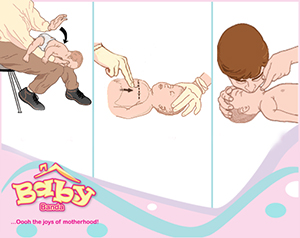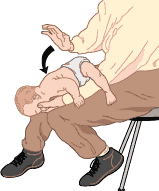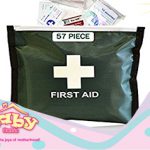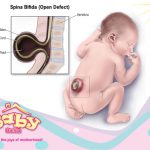Dislodge the blockage
• Hold your baby so that he is lying face down along your forearm with his head lower than his bottom and his back and head supported.
• Use the heel of your hand to give up to five blows between your baby’s shoulder blades. Effective back blows cure the majority of choking incidents.
• Check your baby’s mouth and remove any obvious obstructions. Do not use your finger to sweep inside his mouth. This could push the obstruction further into his throat.
Give five chest thrusts

• If your baby is still unable to breathe, turn him onto his back and give up to five chest thrusts. Use two fingertips to push inwards and upwards (towards his head against his breastbone, one finger’s width below his nipple line). Try to dislodge the object with each thrust.
• Check your baby’s mouth after each thrust and remove the obstruction if you can reach it. Continue giving your baby back blows and chest thrusts until help arrives.
• Even if your baby seems to be fully recovered from the choking episode, take him to your doctor that day.
• If your baby is unconscious try to get a response by calling his name and tapping gently on the sole of his foot. If your baby is unconscious but breathing normally, hold him on his side, head tilted as if you were cuddling him, with his head lower than his tummy. If your baby is unconscious and he is having trouble breathing use the following procedure:
Open the airway
• Kneel at a right angle to your baby’s chest. Place one hand on his forehead and gently tip his head back. Then using your other hand use one finger to lift his chin.
• With one hand on his forehead and the other supporting the back of his neck, gently tilt his head back to open the airway. In some cases, this may be enough to help their breathing resume.
• Take a quick look at your baby to remove any visible obstructions from his mouth and nose. Look, listen and feel for normal breathing as shown. Allow up to 10 seconds for this.
• If he’s not breathing begin CPR (a combination of chest compressions and rescue breaths) as you call an ambulance or rush him the nearest health centre.
Give five rescue breaths
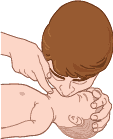 • Open your baby’s airway.
• Open your baby’s airway.
• Seal your lips around your baby’s mouth and nose.
• Blow steadily into his lungs, looking along your baby’s chest as you breathe. Fill your cheeks with air and use this amount each time.
• As the chest rises, stop blowing and allow it to rise.
• Repeat this five times.
Give 30 chest compressions:
• Ensure that your baby is on a firm surface.
• Place two fingers in the centre of your baby’s chest. Imagine a line between your baby’s nipples. Find the middle of that line and measure about one finger’s width below that point. Now position two fingers of one hand on that spot.
• Press down sharply to a third of the depth of the chest.
• Press 30 times, at a rate of 100 compressions per minute.
• After 30 compressions, give two rescue breaths.
• Continue resuscitation (30 compressions to two rescue breaths) without stopping until help arrives or you reach the nearest health centre.
CHOKING ON MUCUS OR MILK
• If your baby begins to choke on mucus or milk, turn him on his side with his head slightly lower than his body. If necessary, gently assist him in clearing any visible fluid from his mouth or nose with a cloth or your fingers. If this method doesn’t work, you may need to use a bulb syringe.
USING A BULB SYRINGE
• In the mouth: Turn your baby on his side with his head slightly lower than his body. Press in the bulb before placing it in the baby’s mouth. As you suction out the mucus or milk, be careful not to catch the delicate mucous membranes inside the cheeks or the back of the throat. Remove the bulb, and squirt the contents into a cloth.
• In the nose: Suction mucus from the nostrils in a similar way, inserting only the tip of the bulb syringe. Be extremely careful when you do this. Suctioning the mouth or nose too vigorously, too often, or for too long can dry and irritate delicate tissues and cause trauma or irritation to the mouth or nose.



